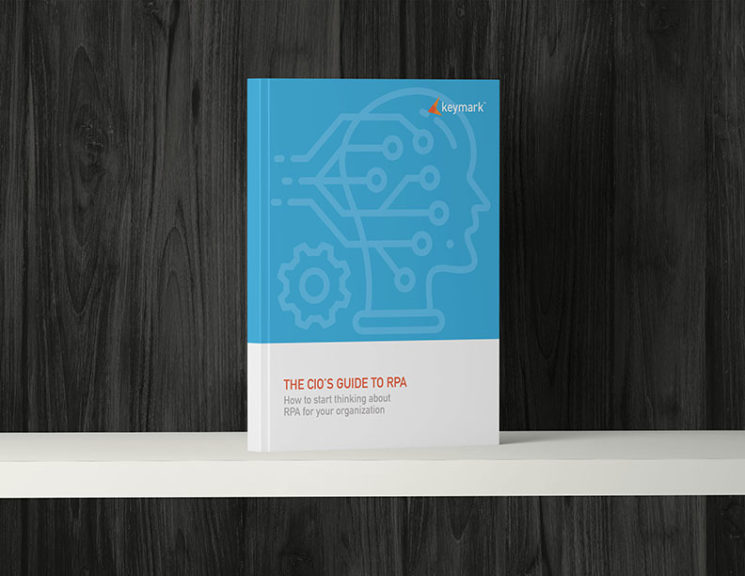Robotic Process Automation explained
Automate Manual Processes with Robotic Process Automation
Robotic Process Automation (RPA) is more than a buzzword. It’s a technology that’s transforming the way organizations collect, review and input data. Simply put, RPA was created to automate business processes. Its backbone is a software configuration, or “Digital Worker,” that is programmed to gather and process data without human intervention. Instead, digital workers simulate –and automate –your organization’s most repetitive and remedial tasks, instantly improving productivity, eliminating errors, and freeing your people to focus on more important, knowledge-based work.
RPA By The Numbers
- Can create an immediate 25-50% cost savings by automating human tasks*
- Can increase staff productivity, service levels and capacity by 35-50%
-
Can consistently deliver 100% accurate data
- Can reduce process cycle times by 30-50% (average) or as much as 90%**
- Can reduce average handling time by 40%
Make the Most Out of Your Time
Another important thing to note about an RPA digital worker is that it can work around the clock. When the rest of your company heads home for the day, your digital worker can stay running 24/7 to accomplish tasks without the risk of error —and minutes matter when it comes to efficiency. It may take only a few minutes for an employee to log in and out of multiple systems each day, but a few minutes each day adds up to hours and hours each year –for a single employee. Couldn’t this time be better spent providing personalized service to your customers, clients or constituents or making strategic decisions that only a human can make?
Everyone benefits from RPA.
Is RPA right for you? Almost certainly. Because it can be scaled and used for almost any kind of repetitive task, RPA has already been proven to work for organizations in almost every industry, including:
- Banking
- Debt Buying/Loan Servicing
- Human Resources
- Insurance
- Healthcare
- Transportation and Logistics
- IT
- Manufacturing
- Accounts Payable
- & More!

Case Study
RPA in Action
The Problem
As a large energy supplier, Eversource’s business model is complex and spans from supply chain and delivery, metering, and renewable energy programs to customer management and office operations like billing, and financials.
The Solution
With the help of intelligent automation, digital workers now process customer billing special handling requests. These digital workers now handle more than one million internal transactions, allowing human workers to refocus on adding customer value.
Eversource has seen over $15 million in steady state value delivered by leveraging RPA.
RPA can do exactly what you need.
The beauty of RPA is that it can be deployed for virtually any business activity that involves users, data and systems—everything from websites and portals to enterprise applications, legacy systems and popular desktop applications like Excel. Because it doesn’t rely on complex coding or APIs, your first robot can be created and deployed in a matter of weeks, not months.
Robotic Process Automation Can…
- Gather, collate and validate information automatically
- Synthesize and analyze structured and unstructured data
- Record and transport information and data
- Calculate a position or value and/or decide what to do
- Communicate with and assist users, clients and customers
-
Orchestrate and manage activities (both robotic and
people-based) - Monitor, detect or report operational performance
- Learn, anticipate and forecast behavior or outcomes
- Create an immediate 25-50% cost savings by automating human tasks*
-
Increase staff productivity, service levels and capacity by
35-50% - Consistently deliver 100% accurate data
- Reduce process cycle times by 30-50% (average) or as much as 90%*
- Reduce average handling time by 40%
How does RPA work?
Robotic Process Automation quite literally creates digital workers or “bots” within your IT infrastructure that are responsible for specific, defined tasks. They can read data, input information, and navigate software applications just like your human employees. But, they can work 24/7 if you need them to, and they don’t take vacations. Depending on the processes you’re looking to streamline, there are different ways to deploy bots to maximize your efficiency and cost savings.
Attended RPA
Attended RPA bots work alongside humans on processes that cannot be automated end-to-end. In these scenarios, the bot enhances your human employee’s capabilities, increases their speed of data entry, and empowers their access to information. These bots canstill be triggered by system events but they typically work from human triggers for tasks like moving information from one form into another in real-time, completing sequential steps on command, or capturing data on the fly.
Unattended RPA
Unattended bots work independently of your human team members. These bots can be scheduled or event-triggered, and follow a process through its entire course without the need for human intervention. Typically, unattended bots execute batch operations like processing spreadsheets of information into multiple applications or reading PDF files received via email and transferring the relevant information into the appropriate application fields.
Designing your solution
You don’t have to choose between attended or unattended bots. You can have both! As you move through the journey of designing an automation solution that works for your organization, KeyMark can guide you to the most efficient, effective, and elegant solution possible.
Take our free CIO's guide with you before you go
Forward-thinking executives are always looking for ways to automate their organization’s most tedious, manual tasks, while allowing their workforce to focus on more valuable, knowledge-based work. RPA automates easily repeatable and rules based tasks. Identify if it’s right for you in our free eBook.

Hyperautomation & Artificial Intelligence
At its simplest, hyperautomation is the combination of multiple technologies into one coherent system. For most organizations, it will leverage both RPA and intelligent Business Process Management (BPM) platforms united by artificial intelligence and machine learning.
RPA currently plays the lead role in showcasing the possibilities of how technology can improve our human talent. However, some larger organizations using digital workers are bumping up against its limitations: Many RPA deployments only address individual, tactical processes. Scaling these workflows across departments and organizational walls can be challenging, especially when the processes are complex or unpredictable.
Building on the success of RPA, hyperautomation is a more holistic automation concept that leverages artificial intelligence to tie together an entire array of digital tools, integrating process silos into a multifaceted, intelligent business process solution.
Hyperautomation is the next evolution of the digital workforce, addressing the most complex organizational structures imaginable through the power of AI.

